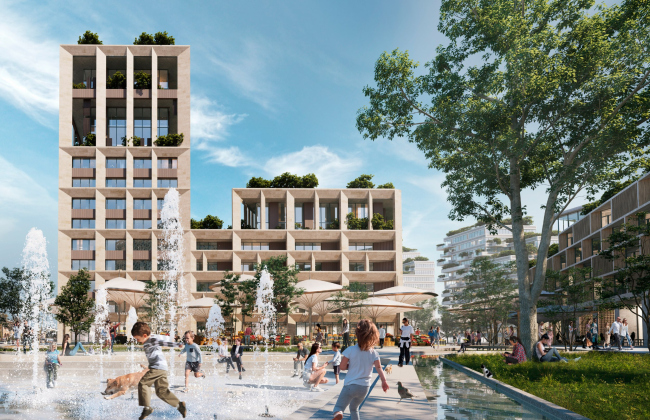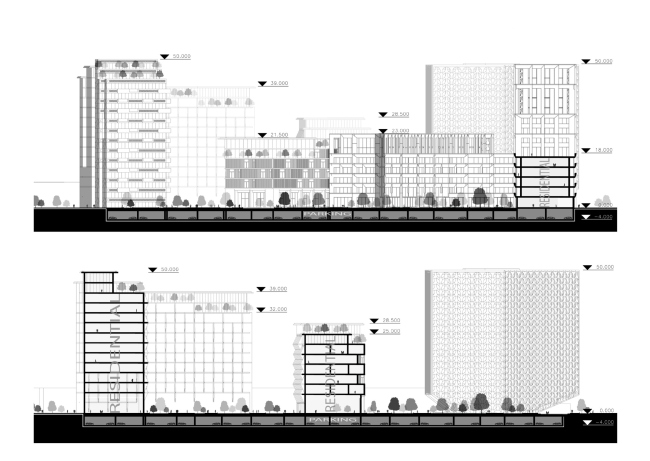|
Published on Archi.ru (https://archi.ru) |
|
| 30.10.2021 | |
|
The Breath of the East |
|
|
Alyona Kuznetsova |
|
| Architect: | |
| Andy Snow | |
| Studio: | |
|
Designing a residential complex for Tashkent, GENPRO is turning to traditional architecture and modern trends, aiming at emotionality and efficiency: the panjar window lattices and mishrabias are neighboring on vertical greenery and parametric ornaments, while the theme buildings do on a cotton alley and an oriental bazaar. Over the recent years, Uzbekistan has been becoming an ever more open country interesting to the world: in 2019, The Economist pronounced it to be the country of the year, and this year Uzbekistan made the top five most interesting tourist destinations according to The Times, opened its own pavilion at the world Expo-2020 in Dubai, and for the first time around took part in the Venice Architecture Biennale – with an exposition that shared about the local social and cultural phenomenon known a “makhalla”. The project of the residential complex Orient City is Genpro’s to the changes in the country’s image, and a search for balance between the European know-how and preserving the national flavor. Orient CityCopyright: © GENPROThe rich heritage of Uzbekistan and the traditions of the Islamic culture were reflected even in the architecture of the Soviet period, which some experts describe as “oriental” or even “earthquake-proof” modernism. The contemporary architecture still uses traditional forms, such as panjar lattices, vaulted arches, maiolica, and the carpet ornaments, but more often you see faceless average “Euro-samples”. Sometimes, the former and the latter form rather strange combinations, but then again, lucky exceptions are also there. For all intents and purposes, Genpro, acting within the limits of its typology, is offering Tashkent something completely new, yet at the same time not devoid of national flavor, just like the big restaurant complex “Zarafshan” that was built back in the day. Orient CityCopyright: © GENPROThe land site that Genpro is working upon is situated in Tashkent’s southeast, outside the minor ring, equally distanced both from the center of the city and the airport, and almost next to the railway station, from where you can get to Samarkand within a couple of hours by bullet train. Hitherto, nobody actively built housing projects here – if you take a look at this interactive map, for example, you will see that it seems as though the developers were deliberately avoiding the Miradab district. However, most likely, this semi-industrial area of this growing city will soon change. For example, next to the future housing complex a new-format retail complex Alfragmus is being built, quite capable of becoming the local point of attraction and launching, together with Orient City, a new string of positive changes.  Orient City. Transport accessibilityCopyright: © GENPRO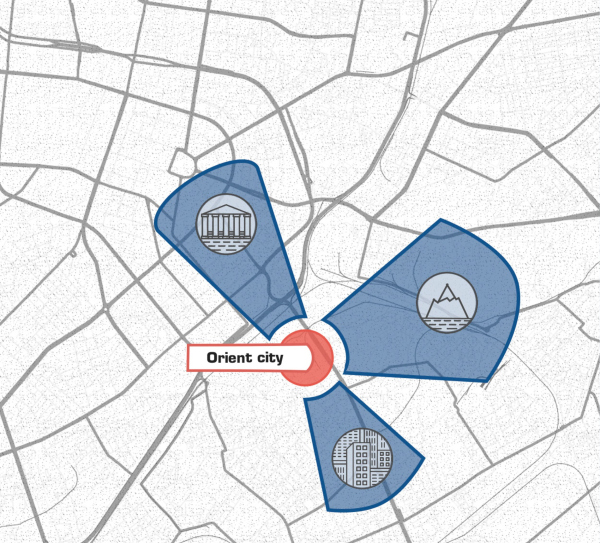 Orient City. The map of viewing pointsCopyright: © GENPRO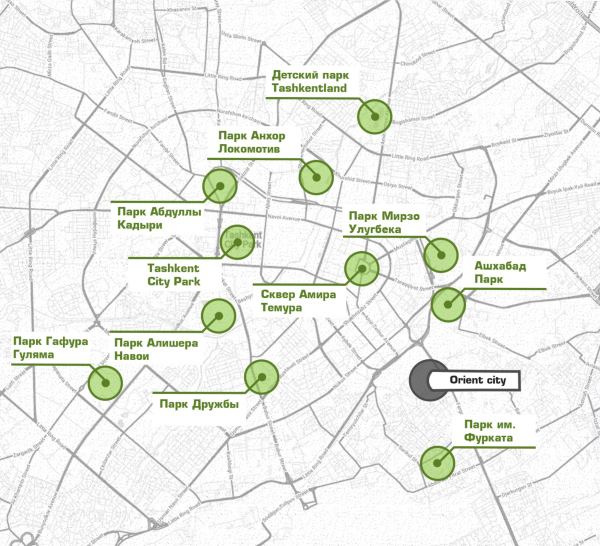 Orient City. The parksCopyright: © GENPRO Orient City. The map of marketplacesCopyright: © GENPRO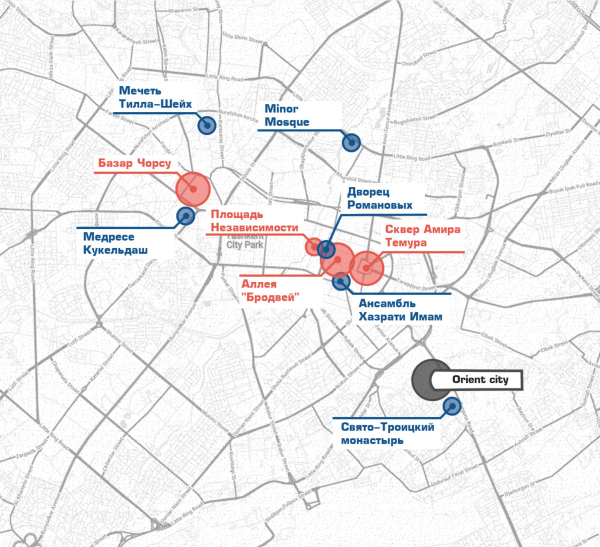 Orient City. The map of landmarksCopyright: © GENPRO Orient City. The greeneryCopyright: © GENPROOne of Genpro’s tasks is offering to the city a new type of public space embedded in a commercial project. The analysis of the content on social networks revealed that the townspeople have little interest in the existing locations of Tashkent. According to the architects’ plan, Orient City must become a new landmark, a place where people will like to spend their time and share this online with photos and hashtags. Curiosity enough, people’s desire to photograph an object more and more becomes the chief criterion for its success, and you can easily visualize “emotional response” as one of the mandatory positions of the architectural (and not only architectural) briefs of the future. In accordance with the task, the architects paid special attention not only to the diversity of facades and skylines, but also to the environment – the heart of the complex is a park straddling a river that crosses the entire site diagonally. Orient City. The conceptCopyright: © GENPROJust as important for the Genpro architects was getting involved in a dialogue with the local tradition, combining it with modern realities, technologies, and solutions. This is why the complex also includes symbols and shapes, characteristic for Uzbekistan; some of the local phenomena were also revised. For example, on the “banks” of the park, there are residential buildings of varying height, grouped into four theme quarters – “rock house”, “sky house”, “garden house”, and “forest house”. Such names, it should be noted, correlate quite well with the local toponymy, in which names that translate as “a thousand apricot trees” or “forty girls” are quite the usual thing. The quarters meet the park with their private inner yards, forming a rectangular outline of the complex on the outside. The entrance to the park is marked by a square with a business center, tents, and a basin, which can be seen as a reference to the traditional ablution fountain. Across the complex, past the cafes, shops and gardens, the park leads to a large sports field that is placed outside the complex and expands the daily scenarios of the residents. 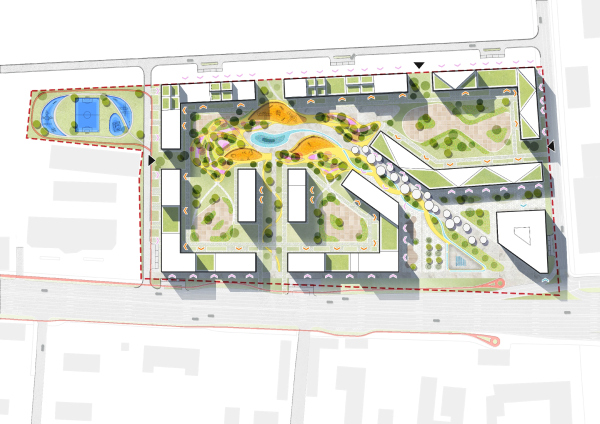 Orient City. The masterplanCopyright: © GENPRO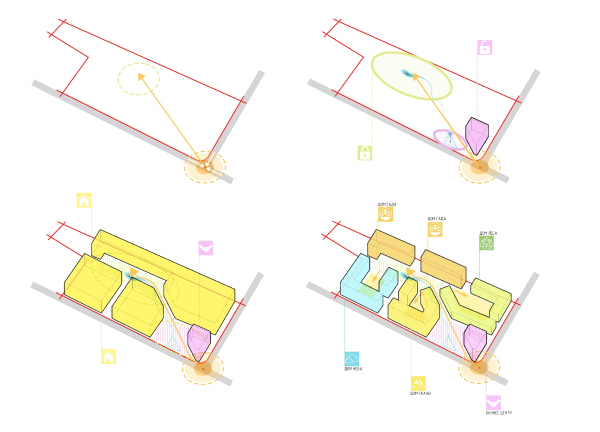 Orient City. The overall compositionCopyright: © GENPRO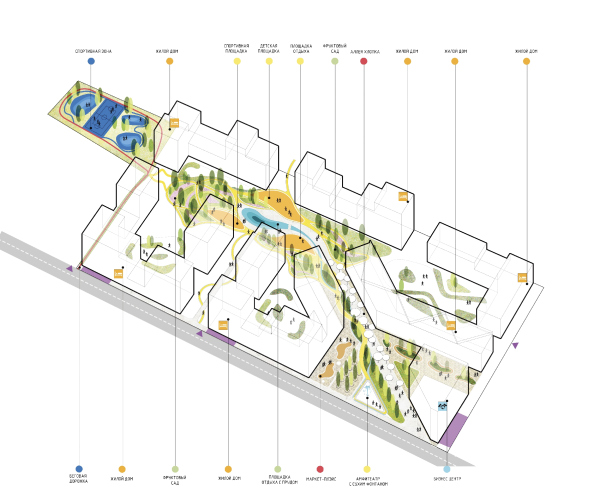 Orient City. The functional contentCopyright: © GENPRO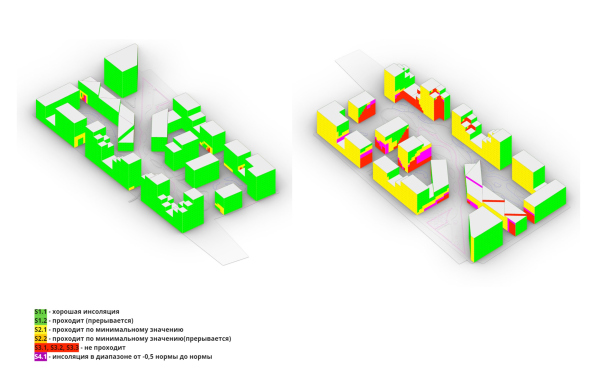 Orient City. The insolationCopyright: © GENPRO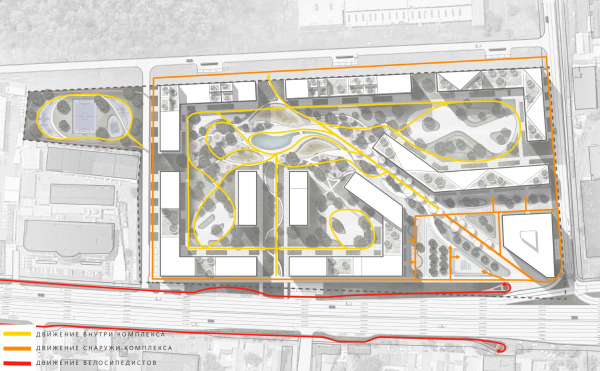 Orient City. The pedestrian streamsCopyright: © GENPROThe facade design also changes in accordance with the names of the quarters: the “sky house” has more glass surfaces, the “rock house” has jagged contours and is clad in natural stone, the “garden house” and “forest house” receive liberal vertical greenery, which also plays the part of an ornament covering the walls and tying different parts of the complex into a single whole, bringing variety into the colors of the desert. The architects also make use of the traditional ornaments, highlighting the horizontal molds with it.  Orient City. The colors of the detailsCopyright: © GENPRO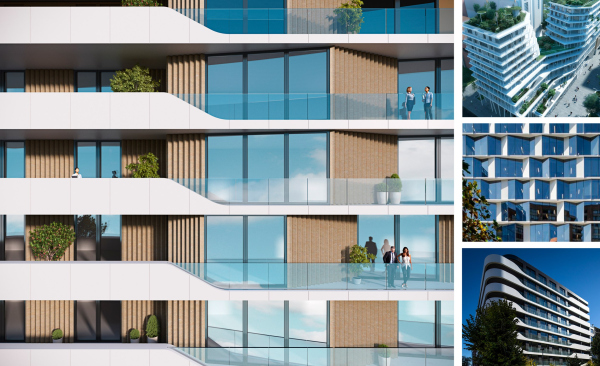 Orient City. The facade solutionsCopyright: © GENPRO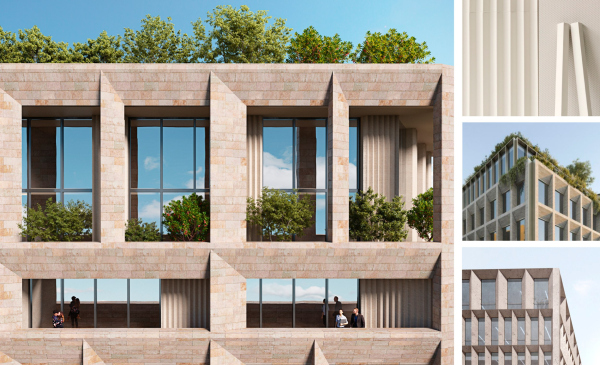 Orient City. The facade solutionsCopyright: © GENPRO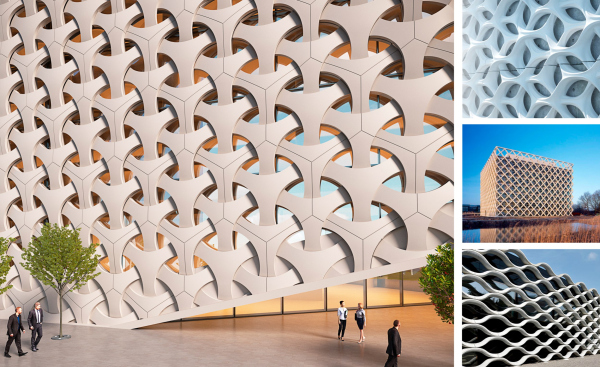 Orient City. The facade solutionsCopyright: © GENPROHowever, although the materials and plastique techniques are different, in general the buildings are constructed according to similar principles: a rectangular base, a terraced top, an abundance of terraces and balconies, and various solutions that help to cool the premises – pergolas, mashrabies, and recessed windows. Orient CityCopyright: © GENPROThe complex’s most “oriental” building is the business center, fully wrapped in sun protection lattices, which makes it look integral and as monolith as a rock, at the foot of which a path to mountain riches begins. Its brutalist form simultaneously brings to mind both the Kaaba and the objects modeled for futuristic films about space. The ornament is no longer a master's cutter, but parametric modeling or, possibly, 3D printing. This combination of ancient craft and technology of the future was the ultimate goal of Genpro. The business center “holds” the corner at the crossing of the Fargona Yuli Highway and the Kushkuprik Street, and, together with the residential sections going into the depth of the complex, sets the axis of the river park. Orient CityCopyright: © GENPROThe relatively reserved character of the facade design is compensated by the improvement of the park and the yards, where it feels like the architects indulged in the charms of the local flavor. The main square turns into a modern version of the oriental bazaar, in the center of which there is an amphitheater with a dry fountain, surrounded by shops and restaurants. The tents, which give a continuous shadow and islands of rest, are stylized like huge cotton buds – the “white gold” of Uzbekistan. Through the “propylaea” of the residential sections, the cotton “alley” and the artificial stream lead the walkers into the inner spaces. In the central part of the park there is a reservoir, playgrounds and sports fields, as well as a garden with fruit trees and greenhouses. Orient CityCopyright: © GENPROIt should be noted that in the hot climate conditions the most expensive apartments are in the bottom floors, cooler and shadier, which influenced the floor plans. The lower floors turn the space of the complex into an active part of the city: the architects designed premises for a kindergarten, coworking spaces, workshops, and a fitness center. Orient City. Vross section viewsCopyright: © GENPRO |
|

